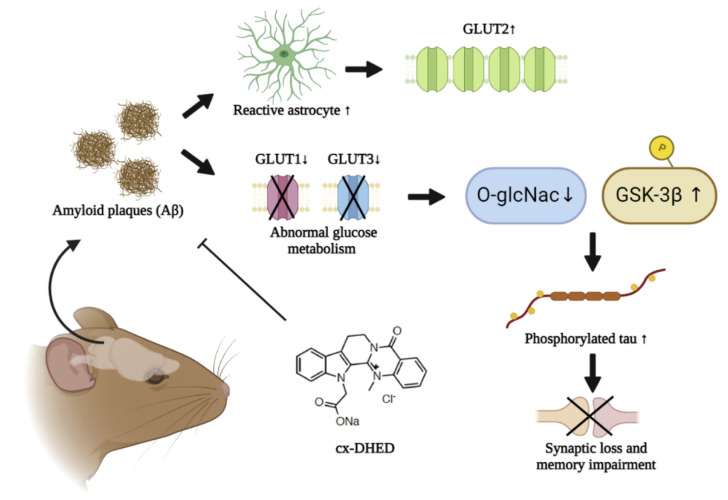Figure 7.
Study summary. In the brain of 5xFAD mice, accumulation of amyloid plaques (Aβ) perturbs normal glucose metabolism by driving a reduction in glucose transporters 1 and 3 (GLUT1 and GLUT3, respectively) or overexpression of GLUT2 by upregulated reactive astrocytes. While phosphorylated GSK-3β was increased, O-GlcNac was diminished by dysfunctional glucose metabolism. Consequently, increased phosphorylated tau leads to synaptic loss and memory impairment. However, cx-DHED treatment attenuated the formation of amyloid plaques and upregulated O-GlcNac, as well as the level of GLUT in the brain of 5xFAD mice. Finally, cx-DHED treatment led to the reduction in phosphorylated tau and recovery of memory function.

